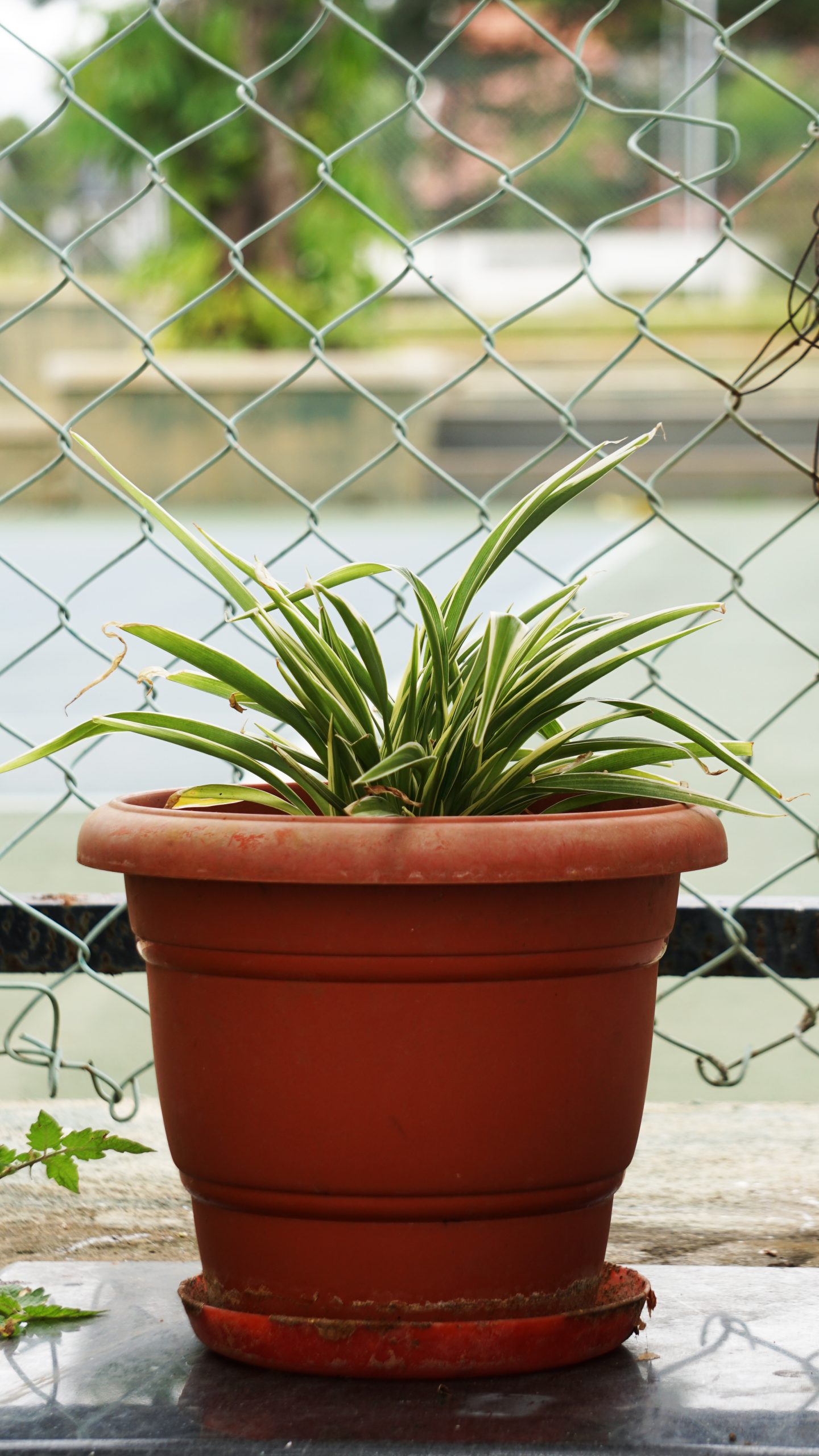Spider plant (Chlorophytum comosum) is a popular indoor plant that is easy to grow and care for. Here are some tips for growing a healthy spider plant:
- Lighting: Spider plants prefer bright, indirect light, but can also tolerate low light conditions. Avoid direct sunlight, which can scorch the leaves.
- Watering: Water your spider plant when the top inch of soil feels dry to the touch. Avoid overwatering, as this can lead to root rot. Spider plants prefer soil that is moist but well-draining.
- Temperature: Spider plants prefer temperatures between 60 and 75 degrees Fahrenheit. Avoid placing them near drafts or in areas with extreme temperature fluctuations.
- Fertilizing: Spider plants benefit from regular fertilization, especially during the growing season. Use a balanced, water-soluble fertilizer once a month, following the package instructions for dilution and application.
- Pruning: Spider plants can become quite bushy over time, so it’s a good idea to prune them back occasionally to keep them looking neat and tidy. Use clean, sharp scissors to trim back any brown or yellow leaves, or to remove any long, straggly stems.
- Propagation: Spider plants are easy to propagate by dividing the plant or by rooting the plantlets that develop on the ends of long, trailing stems. To propagate by division, carefully remove the plant from its pot and gently separate the root ball into smaller sections, each with its own cluster of leaves. Repot each division into a new container with fresh soil.
By following these tips, you can enjoy a healthy and attractive spider plant in your home or office.
To plant a spider plant, follow these steps:
- elect a suitable pot: Choose a pot that has drainage holes at the bottom to allow excess water to escape. Make sure the pot is slightly larger than the root ball of the spider plant.
- Prepare the potting mix: Use a well-draining potting mix that retains some moisture. You can create a mix by combining peat moss, perlite, and vermiculite in equal parts. Alternatively, you can use a general-purpose potting mix.
- Fill the pot with soil: Fill the pot about two-thirds full with the potting mix. Gently tamp down the soil to remove any air pockets.
- Prepare the spider plant: If you have a mature spider plant with plantlets, gently separate the plantlets from the parent plant. Each plantlet should have a small cluster of roots.
- Plant the spider plant: Dig a small hole in the center of the potting mix. Place the spider plant or the plantlet in the hole, ensuring that the roots are spread out and covered with soil. The base of the plant should be level with or slightly above the soil surface.
- Water the plant: After planting, thoroughly water the spider plant to settle the soil and provide moisture to the roots. Ensure that excess water drains away.
- Placement and care: Place the potted spider plant in a location with bright, indirect light. Water the plant when the top inch (2.5 cm) of soil feels dry. Spider plants are relatively forgiving when it comes to watering, but it’s essential not to overwater them.
- Maintenance: Spider plants are known for producing long, arching stems with clusters of plantlets. These plantlets can be left to hang or potted separately to propagate new spider plants. Trim any brown or damaged leaves as needed to maintain the plant’s appearance.
With proper care and maintenance, your spider plant should thrive and produce cascading foliage, adding beauty to your indoor or outdoor space.

